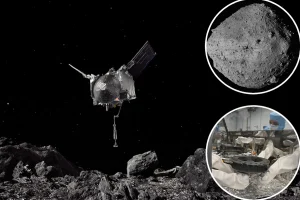Data Center Capacity: Tech Market Health Indicator and AI Bubble Risk
In today’s rapidly evolving technological landscape, data center capacity has emerged as a critical indicator of both the tech industry’s overall health and the potential risks associated with the artificial intelligence boom. As companies race to build and expand these digital warehouses that power our increasingly connected world, the dynamics of supply, demand, and investment in data centers offer valuable insights into where the technology sector is headed.
The unprecedented demand for data center space has created a complex market environment where tech giants are competing fiercely for limited resources. Companies like Microsoft, Google, Amazon, and Meta are investing billions in expanding their data infrastructure to support AI initiatives, cloud services, and ever-growing digital consumption. This race for capacity has led to supply constraints in prime markets, with power availability becoming a particularly critical bottleneck. Many regions simply lack the electrical grid capacity to support these energy-intensive facilities, causing companies to explore locations that were previously considered undesirable. The resulting competition has driven up costs for everything from suitable land to construction materials and specialized labor, creating economic ripple effects that extend far beyond the tech sector itself.
These capacity challenges have significant implications for the broader tech economy. Startups and smaller companies increasingly struggle to access the computational resources they need, potentially stifling innovation and reinforcing the dominance of established players. The massive capital investments required for modern data centers have changed investment patterns throughout the industry, with venture capital and public market attention shifting toward companies that can either provide or efficiently utilize this critical infrastructure. Some analysts warn that this concentration of resources could lead to a bifurcated tech economy where only the largest players can afford to participate in the most computationally intensive innovations, particularly in artificial intelligence and machine learning applications that require enormous amounts of processing power.
The intersection of data center growth and artificial intelligence has become particularly noteworthy, as AI development has emerged as perhaps the single greatest driver of new demand. The training and deployment of large language models and other advanced AI systems require computational resources at a scale previously unseen in the industry. This has led to concerns about a potential AI bubble forming, with parallels being drawn to previous tech booms that ended in painful corrections. Skeptics point to the massive investments being made based on still-unproven business models, while optimists argue that we’re witnessing the early stages of a fundamental transformation in how technology creates value. The truth likely lies somewhere in between, with certain AI applications delivering transformative returns while others may fail to justify their enormous computational requirements.
Environmental considerations add another layer of complexity to the data center capacity question. These facilities consume vast amounts of electricity and water, raising legitimate sustainability concerns even as the industry works to improve efficiency and increase the use of renewable energy sources. The carbon footprint of AI in particular has become a contentious topic, with some researchers highlighting the enormous environmental cost of training advanced models. Progressive tech companies are working to address these challenges through innovations in cooling technology, server efficiency, and renewable energy integration, but the fundamental tension between growing capacity needs and environmental sustainability remains unresolved. This has led to increased regulatory attention and public scrutiny, adding political and social dimensions to what might otherwise be viewed as purely technical and economic considerations.
Looking ahead, the relationship between data center capacity and tech industry health will likely become even more pronounced. Infrastructure limitations could potentially constrain the pace of AI advancement and other computational innovations, forcing companies to prioritize efficiency and return on investment rather than pursuing raw computational power at any cost. This might ultimately prove healthy for the industry, encouraging more sustainable growth patterns and preventing the formation of a truly dangerous bubble. However, it could also slow the development of potentially transformative technologies. The challenge for industry leaders, investors, and policymakers will be finding the right balance – building sufficient capacity to support genuine innovation while avoiding the pitfalls of overinvestment and unsustainable growth. How this balance is struck will shape not just the future of individual companies but the trajectory of technological progress itself in the coming decades.










